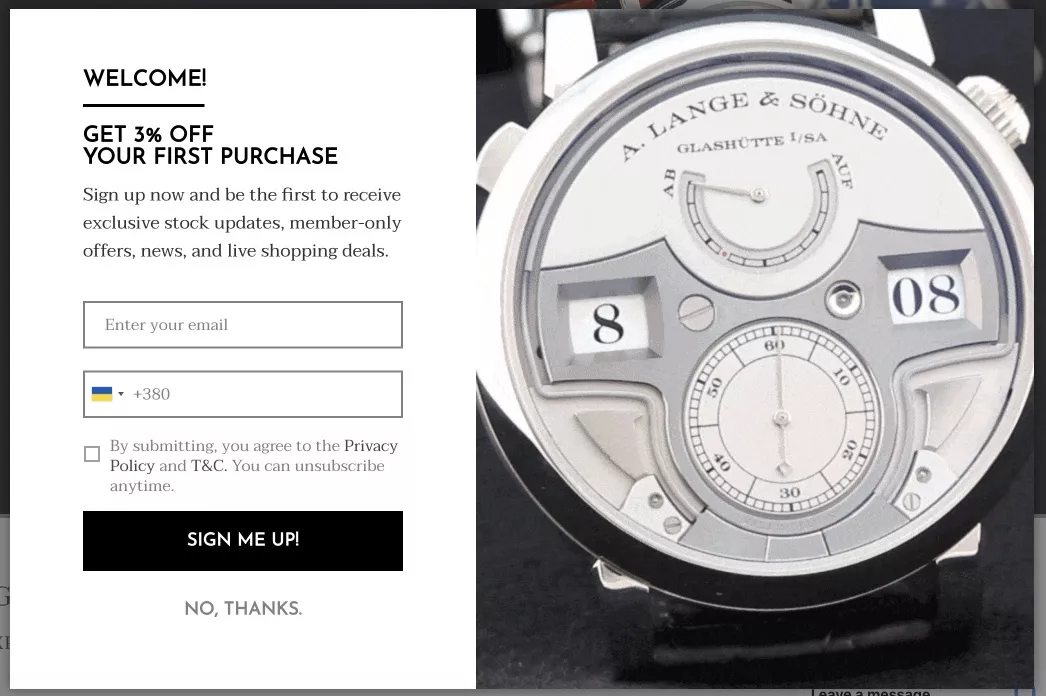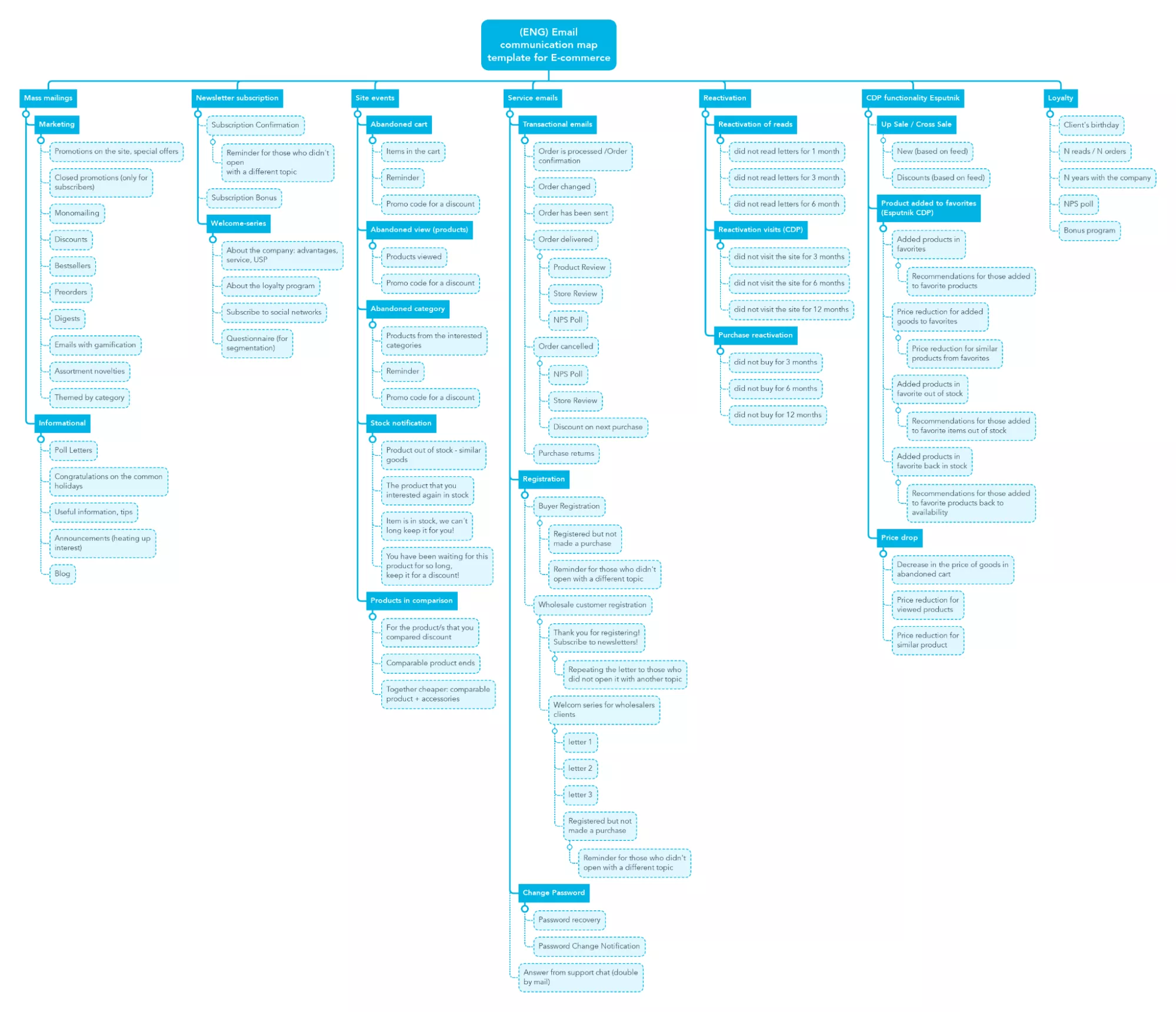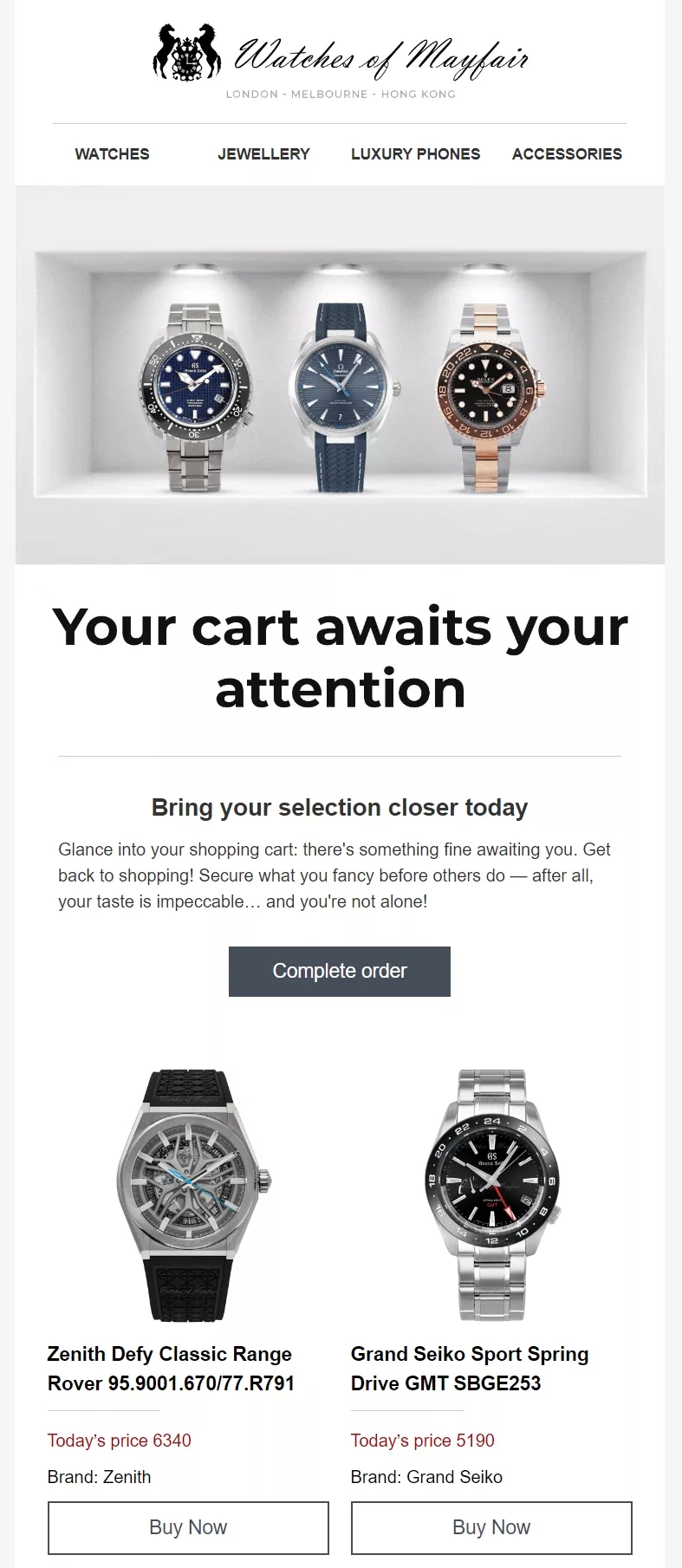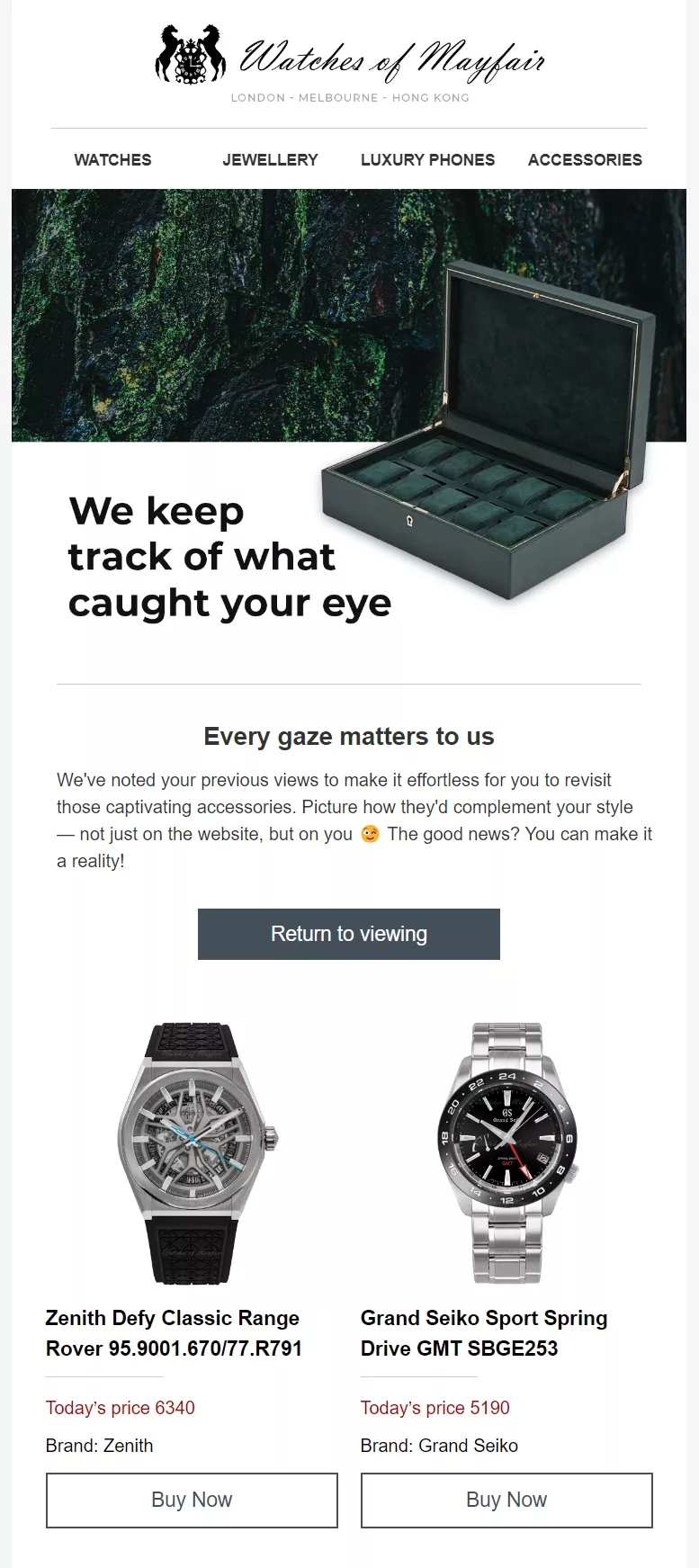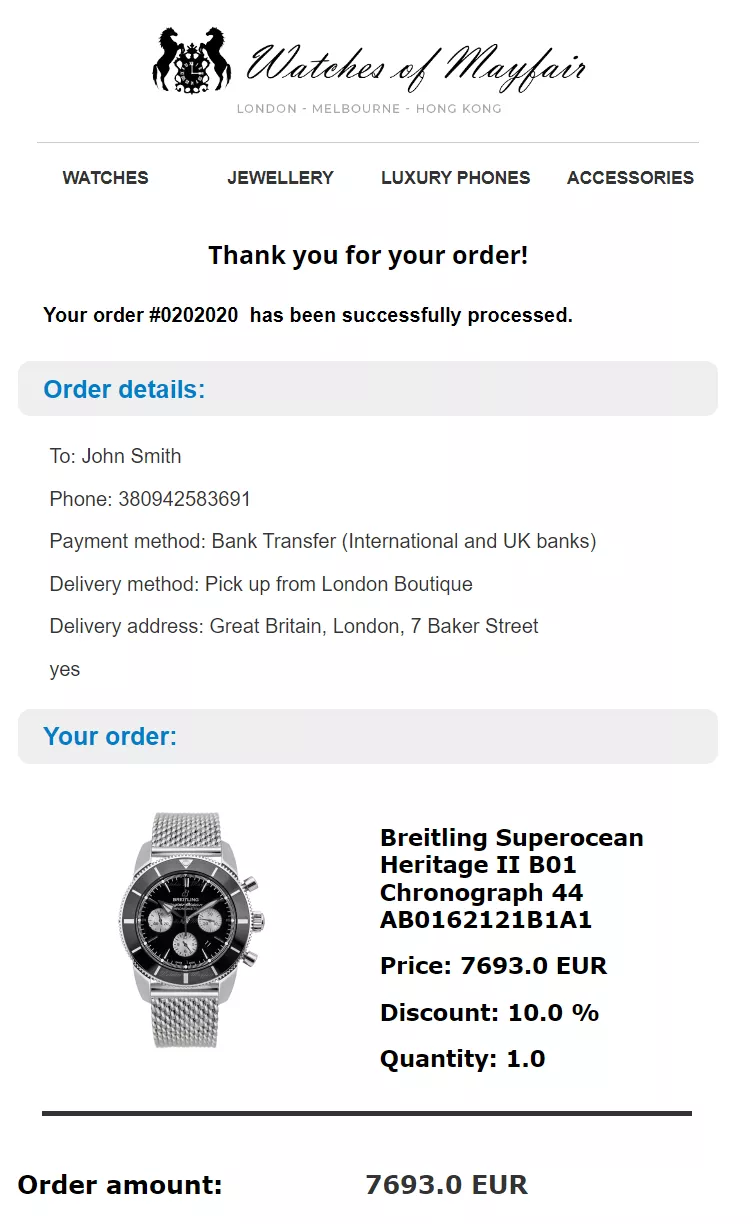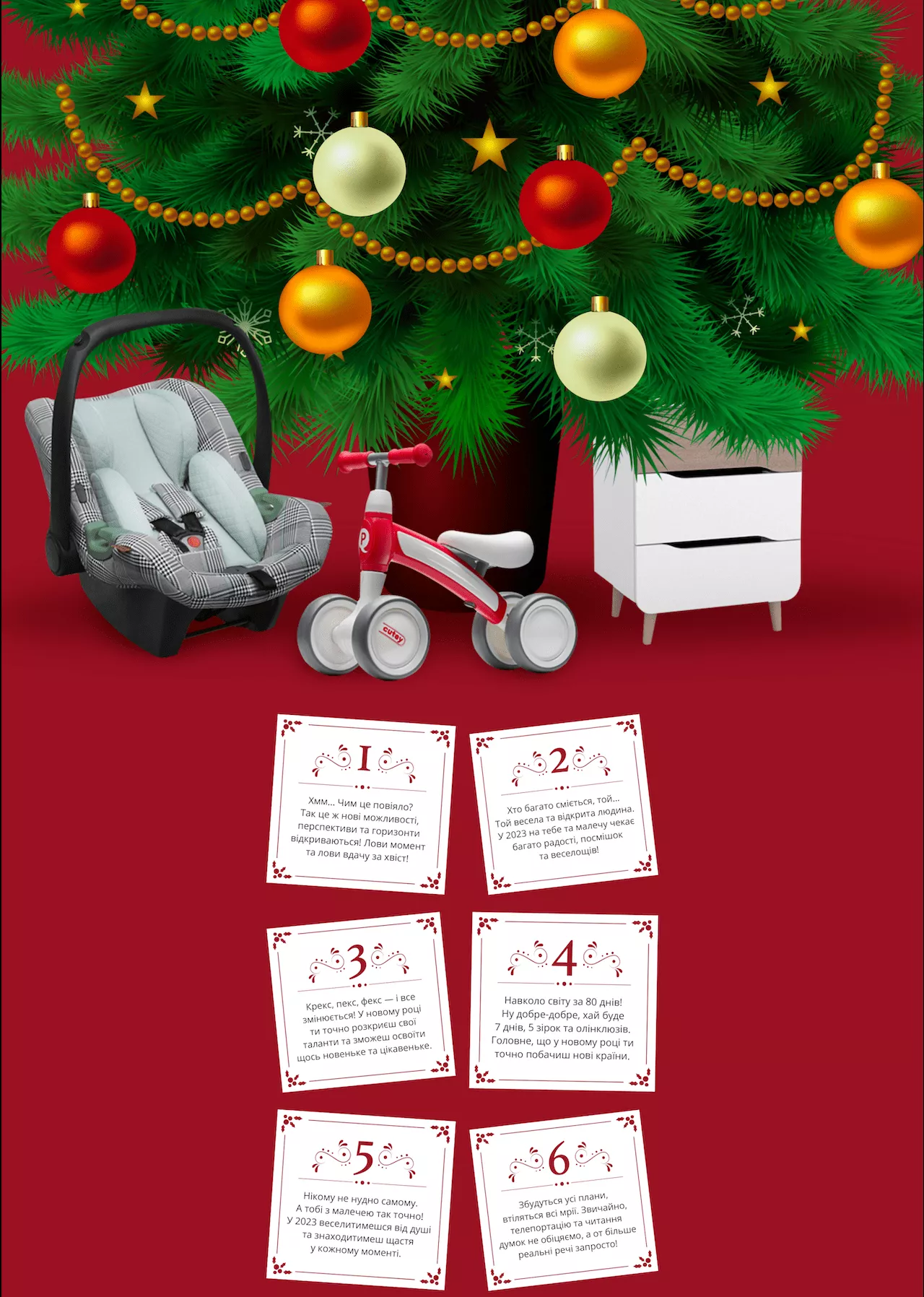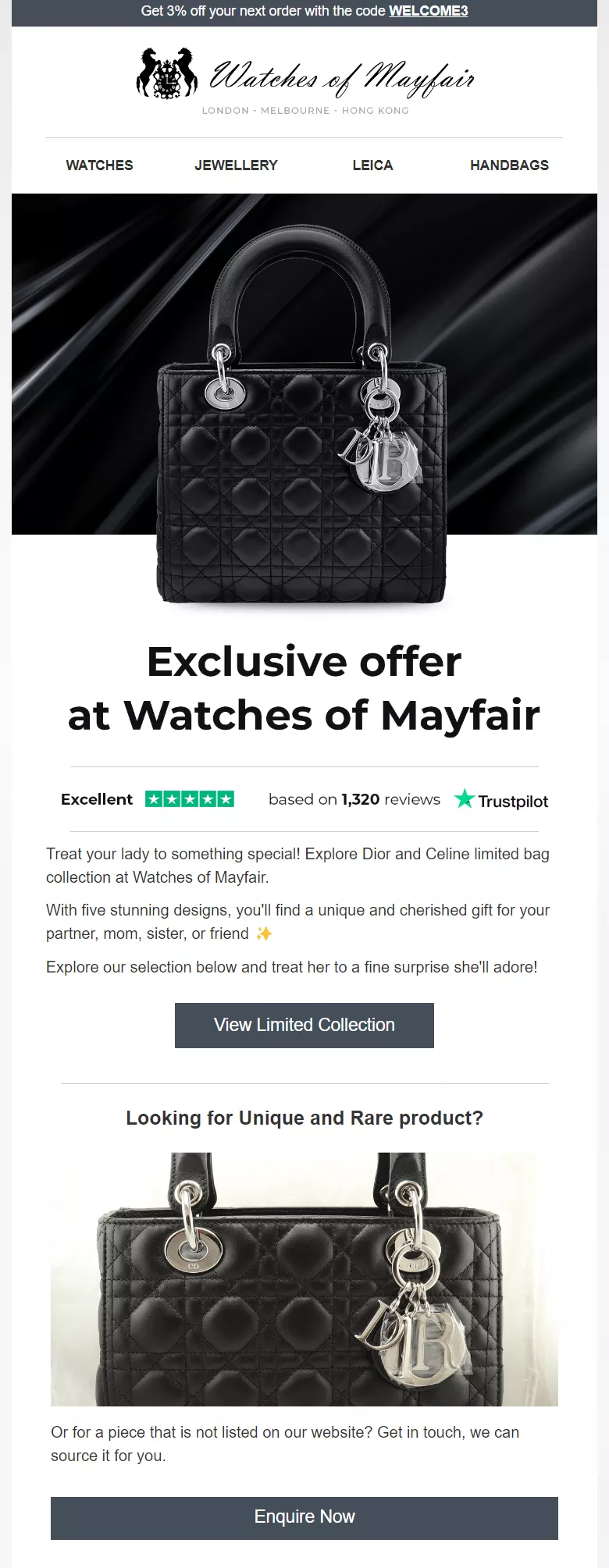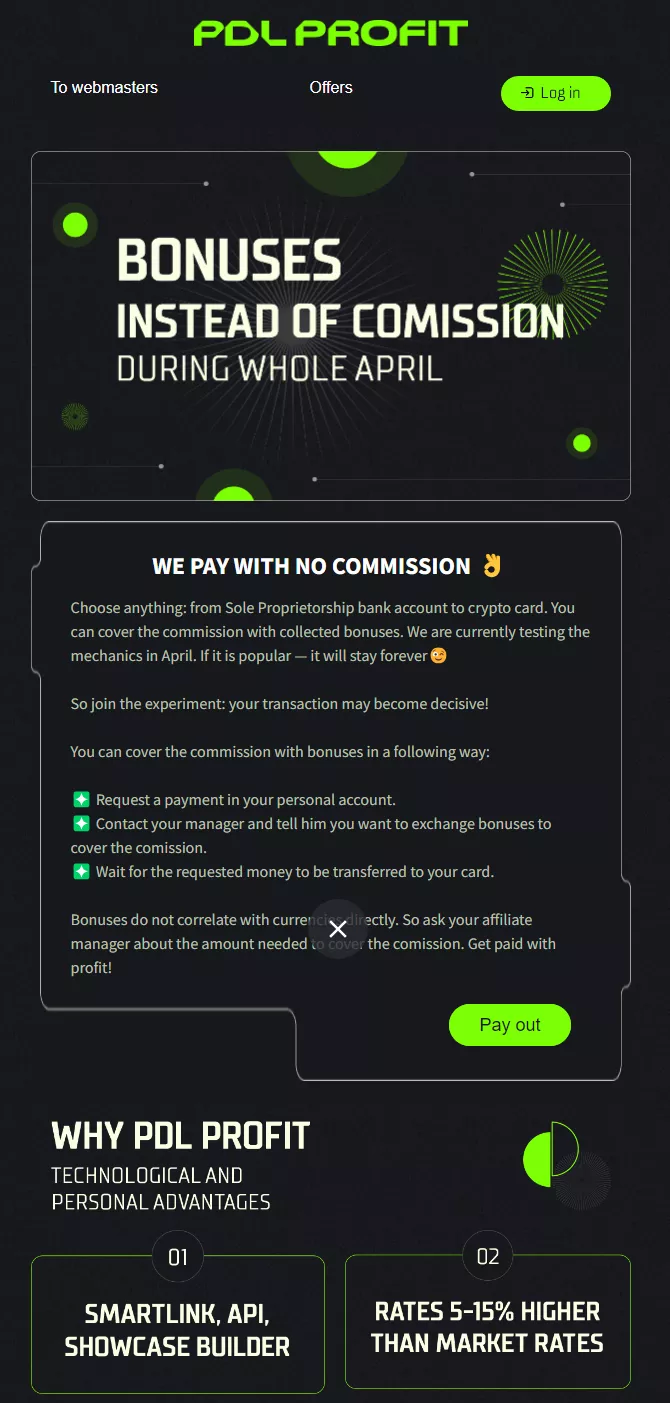Every business is based on supply and demand and its ability to meet that demand. In the age of internet search, online advertising, and other marketing tricks, it only takes a few clicks for a user to find the product they are looking for. However, companies need to make an effort to ensure the user chooses to purchase their products.
Email newsletters are one of the most useful tools for boosting sales success and brand recognition. Let’s take a look at how they can generate revenue and interest and increase customer loyalty to your online store.
Advantages of email marketing for online stores
In short, email marketing is a powerful tool for most online stores and businesses.
Email marketing is exactly what you need if you want to:
- increase the number of new customers;
- retain existing customers, keep in touch with them, and remind them of your brand on a regular basis;
- create a positive customer experience;
- encourage repeat purchases with promotions and discounts.
For each niche, email marketing takes its own form and offers a different set of tools. For example:
- Clothing, Shoes, Accessories. Make interesting selections of goods from the site, select from them a ready-made “look”, inform readers about new collections, sales and exclusive offers.
- Electronics. Send useful and relevant tips on choosing equipment or a review of it. Inform about discounts, promotions and site offers, remind users about warranty, repair, service, exchange and purchase in installments.
- Jewelry. Inform about unique and new collections, sales, offers. Make selections of accessories by material, by theme, by event, by budget or for a gift. Make tips on choosing jewelry, for example, under what clothes suits a certain necklace.
- Home Appliances. Make a selection of recommended products in the newsletters, for example, the top 10, “the most popular”, “the best quality”. Also, remind about the provision of warranty, repair, installments. Tell about the product to the user, give him an answer to the questions that can push him to buy. For example, for an air conditioner, how often it should be cleaned, how much electricity it consumes, what are the additional functions.
- Food establishment chains. In the letters you can tell about promotions, offers, new assortment, additional functions of the institution, for example, delivery or banquet service. Do mailings to increase loyalty – share the new design of the establishment, customer reviews, menu.
- Bookstores. Announce new titles and pre-orders, book recommendations and selections by genre, author, series. Inform about promotions and unique offers. It’s always interesting to find out what’s most popular right now, various ratings and book awards.
- Body Care Products. Submit the result of beauty products, how it was before and how it became after. Report promotions, discounts and care selections/series, send out tips on how to use certain products and who they will suit.
- Home Products. Tell and show how easy and convenient it is to use products. Separate emails by application, style, and the like. Don’t forget to announce discounts and special offers.
- Power Tools. Send useful and relevant tips on choosing a tool, tell how reliable it is, what is the warranty. Make reviews, inform about new products, discounts, promotions and offers of the site. Remind users about repair, maintenance and buying in installments.
- Furniture. Inform the buyer how to care for furniture surfaces, how to create a certain style and help to select goods to it.
- Household chemicals. Here it is also important to show the result, how it was before and how it became after, and safety – certificates and customer reviews. Inform about promotions, discounts and make selections, tips for use.
- Ticket sales (tourism, events). Keep buyers in the infopole, remind about new events, emphasize popular ones. Give tips on the most interesting routes, flyhacks on how to get there cheaper/faster. For tourists, write informative emails describing tour plans or the area where the tour takes place.
- Toy stores, products for children. Show the joy and benefits of toys and related products. Inform about the materials the products are made of, whether they are needed for development or entertainment.
Email marketing is not suitable only for those who:
- are not interested in promoting their email channel;
- don’t want to or can’t drive traffic to the site;
- do not want to expand their email database with subscription forms (there is no email list waiting for your emails and messages);
- have no desire to create quality content and improve their competitiveness.
In all other cases, it’s a great way to increase sales.
Next, I’ll tell you more about each type of email campaign and give you a checklist on how to set up email marketing for your online store.
Step 1: Your audience. Building an email list.
You have a website. It’s great. Customers come and go, but you usually want them to come back. You want them to anticipate new products, look forward to discounts, and seek advice and assistance in choosing a product.
All this can be achieved through email, which is the most personalized channel where you can establish one-to-one communication with the user.
The first step is to collect emails from potential customers using a subscription form on your website (a pop-up, a fixed form in the footer/header, or on the subscription landing page) and offer them bonuses for subscribing to the newsletter. For example, a discount on their first order or free door-to-door delivery.
At this point, friendship and loyalty are still a long way off. Still, to start a conversation and set a good tone, you need to offer a useful and pleasant gift, inform them about your willingness to help, and talk about the benefits of cooperation in the future.
Ensure that the user gets a sense of your value and benefits within the first 25 seconds of their visit. Write about the subscription bonus in the header, footer, pop-up, and widget until the visitor realizes how much they need it. They shouldn’t leave without your bonus gift.
If less than 3-5% of your traffic comes to the bonus forms on your site, it is most likely worth improving. See what can be done:
- Visually highlight the size of the discount or gift, which is the main lead magnet for the visitor.
- Highlight the form itself so it doesn’t get lost among the many blocks and feeds on your site.
- Be sure to indicate where and how the customer will receive the long-awaited bonus after filling out the form.
- It is also a good idea to analyze the subscription forms of your competitors.
Step 2: Analyze competitors in your niche.
Competitor analysis is one of the most important steps in planning an email strategy for your business. It will help you identify the strengths and weaknesses of other market players’ email strategies. This can ultimately help you develop a unique strategy that addresses your competitors' weaknesses and reinforces your strengths.
Stages of competitor analysis:
- Who are your main competitors? Who is doing so well in your business niche that all customers can easily compare you to them? Consider businesses that offer similar services and/or products. If there are only a few of them (less than three), consider those that target a similar audience to yours.
- What about strategies? Research your competitors’ email marketing strategies:
- What types of email campaigns do they use? Email, SMS, web push, Viber, mobile push, or chatbot campaigns?
- What types of content do they send? Promotional, informational, service, or triggered?
- What email templates do they use for triggered emails?
- Identify the strengths and weaknesses of your competitors. It’s simple. Analyze your emails from the customer’s point of view. You’ll immediately understand what kind of product design, narrative, and presentation they want to see in their emails. Now you can use this for your own purposes to avoid mistakes or, on the contrary, to get an interesting idea or presentation. Don't forget that nowadays, communication with businesses is mostly done through smartphones and other gadgets. So, be sure to check how your emails or messages look on both desktop and mobile.
- Use this information to develop a strategy for your own email campaign. Make a list of what your competitors use most in their emails (informational occasions, promotions, discounts, useful information), analyze what you should use, and apply it to your own emails. Don't forget to take into account your competitors’ weaknesses because you don’t want to repeat their mistakes.
Now you are ready to create unique and effective content to help you stand out from the competition.
Before you start developing your strategy, I suggest that you review the extended email communication map for e-commerce to better understand what is important to send to your customers. Consider the following factors: target audience, product or service features, competitive environment, communication channels, budget, and marketing campaign goals.
Here’s a map template of key triggers and bulk emails for an online store. There may be many of them:
Step 3: Determine basic technical settings and choose an email newsletter service.
The next step is to decide which service you want to use to create and send your newsletters. The service should fit your needs and budget, and it should be easy and intuitive to use. Define your goals and how you will promote the product:
- What channels are you planning to use? Just email or SMS, web push, mobile push, Viber, app inbox, web widgets, and chatbots too.
- What service features are a priority for you? Email automation, audience segmentation, A/B testing, and content personalization.
- How functional and user-friendly is the message editor? You need a good editor to build creative, colorful email templates and designs. It would be best if the service comes with several templates for different informational occasions and the ability to customize them.
- How much of your budget are you willing to allocate to launch your channel(s)? Different email marketing services offer different pricing options. Some plans charge by the number of emails/messages sent, while others charge by the number of contacts in the database to which the emails are sent. Analyze and choose the service that best suits your needs in terms of cost so that future email campaigns stay within budget.
Whichever email marketing service you choose, you need to monitor your domain technical settings, identify errors and alerts to improve delivery rates, and protect against fraud such as phishing and spoofing. To do this, you can use special programs or online services.
To keep track of sent statistics, spam, domain reputation, and other important metrics, you’ll need Postmaster. This service is especially important for businesses and organizations that send a lot of emails. It allows you to get information about email delivery and identify negative factors that can lead to a bad domain reputation and being flagged as spam.
Step 4: Create content for the newsletter.
In the first phase of customer communication (when you launch the welcome series or the first promotional emails), start by offering customers the content you think is appropriate. And then, use the results of the campaigns and the incoming data to create emails based on customer preferences. Analyze whether they are excited to see your discount digest email or maybe they’ve been waiting a month for an interesting gamification with a discount code.
Be sure to develop a content plan for your emails for at least a month. The more you plan, the better you’ll be able to evaluate which emails are more important, when to mix your promotional emails with newsletters, and how to manage your list when launching new email campaigns in the future.
Here are the main types of emails to test and include in your monthly content plan:
- Promotional emails can help you inform customers about new products, discounts, best-selling products of the week, promotions, or sales. In a promo email, you can show and tell more about the products or services; You can also offer an additional bonus to increase loyalty; this could be a promo code, a discount, or even a gift.
- Don't forget about capitalizing on special occasions. Many users wait for major holidays (New Year’s or Valentine’s Day) to open a long-awaited email from their favorite store and expect discounts, special offers, or promo codes.
- Gamification is ideal for both holidays and brand/store promotions. Game elements, colorful stylized design, and a desirable bonus to compete for are the secrets to success and audience interest.
- Use newsletters to help your audience learn more about you and your online store’s products. If you have a new product or interesting news, tell your customers about it. Product reviews, testimonials, articles, and tips work well in emails to increase native sales.
Step 5: Personalize your emails.
Setting up proper data collection during site registration will allow you to receive not only the user’s email but also their
- full name
- phone number;
- gender;
- location (sometimes)
- preferences/interests, and other important information.
This data allows you to send personalized messages. Now, you can easily address your customers by name and recommend products from their preferred categories in an email. After the order, for example, you can immediately send an SMS to their smartphone about the transaction. Simple, convenient, and cute, you’re sure to leave a lasting impression!
Think about triggered emails, as these are your constant source of revenue generation. Sent automatically in response to certain actions taken by the visitor on the website, they are an essential part of any company’s marketing strategy. You just have to set them up once, and they then work like clockwork to advise and prompt customers. Triggered emails focus on:
- what the customer forgot to do – the Abandoned cart trigger;
- that the customer browsed certain products – the Abandoned view trigger;
- what is in stock, and which of their favorite products have been reduced in price.
They can also be personalized to increase conversions. The possibilities and imagination are unlimited. I recommend setting up standard triggers, such as double opt-in emails, welcome emails, abandoned cart, abandoned view, and order accepted/sent/delivered/canceled.
Let’s take a closer look at triggered emails.
Abandoned cart
If a user adds items to the cart but does not complete the purchase on the site, a personalized email is sent to remind them of the items in the cart. You can simply invite them to return to the site and complete the purchase, or you can apply a discount to the items in the cart to increase motivation and benefit. If users often ignore offers, don’t hesitate to raise the stakes and send an additional email with a promo code or greater benefit, such as free shipping over a certain order amount.
Abandoned view
If a user visits a product page but does not add it to the cart, they will receive an email with a reminder of their recent browsing and an offer to return to the site and make a purchase. You can also make it more unique (customized) by recommending similar products to increase interest.
Order confirmation email
It is automatically sent immediately after the customer makes a purchase in your online store. This email confirms that the order has been successfully accepted and is being processed. It contains important information such as the name of the products or services ordered, order details (price, name, brand, quantity), unique order number, shipping information, and recipient contact information.
There are also more complex personalization schemes with multiple funnels and email chains. While these schemes are advanced and cannot be set up so easily, they will help make emails more personalized and effective. You’ll need more detailed data about your contacts, such as product recommendations based on purchase history or preferences.
Step 6: Optimize your newsletter.
Timing an email is not just selecting a random number on the send timer. It’s the art of giving a person what they want at a time when they can easily buy it and, most importantly, are ready to buy it.
I won’t speculate on the magic time to send an email, as every business has its own peculiarities. It’s important to test and measure the number of opens and clicks at different times and days of the week and choose the right time to send. This is your chance to catch the customer’s eye at the right time.
For example, for a food delivery service, the best time to send emails is at 11:30 a.m., when emails and other messages will whet the appetite for the afternoon meal. After 5 p.m. is also a good time as this is when most customers want a quick and tasty meal after work.
Here are some tips on how to set the right time to send emails and which times to avoid:
- Analyze your target audience’s daily routine. When are they most likely to shop: morning, evening, or afternoon? For your first email campaigns, I recommend testing different send times/days to make sure your theories are correct.
- It’s important not to send emails late at night (without notice) to avoid a wave of unsubscribes and spam. The only exception to this is if you are running an evening/nighttime promotion, such as "Discount Night," for which late sends are allowed.
- You also don’t want to schedule triggered email campaigns for late in the day. Some email marketing services allow you to limit the time you can send triggers, such as from 8:00 a.m. to 9:00 p.m.
- Present yourself not just as a brand with a newsletter but as a friend and assistant who can help fulfill the customer’s needs.
And don’t forget to play around with email subject lines and content, as this is your second chance to improve email views. After all, being timely with an offer or a piece of information isn’t necessarily enough to inspire the user to read your message.
A/B test the subject lines of your promotional emails. Create 3-4 different types of subject lines:
- One should be a long subject line with the exact end date of the promotion to test the motivation of customers to make a quick purchase.
- The second subject line should be short, stating the cost of the product or the minimum starting price.
- The third can be original and unique, such as an unfinished sentence, a proverb, or a catchphrase.
Get creative. Add emoticons or icons.
Use the subject lines with the highest open rates a little more often — this will give you a certain style of communication with your audience, and people will see and respond to yours among the mass of incoming emails.
Also, use A/B testing to determine which arrangement of product blocks/blocks in your emails produces the best results. You can also test the display of prices: remove the prices from one of your emails and place a CTA (call to action) to visit the website instead.
Step 7: Analyze the results.
Once again, analyze the performance of your emails. Don’t be afraid to analyze because even a negative result is a result. Anti-case studies will serve as a good lesson for the future, telling you what to avoid and what your audience doesn’t like.
Analyze key KPIs for each email campaign:
- Open rate, OR (a good OR is 15-25%)
The percentage of recipients who opened your email. It allows you to assess how engaging your email subject lines and preheaders are.
- Click-through rate, CTR (a good CTR is 2% to 5%)
The percentage of recipients who clicked on the links in your email. It shows the level of audience engagement and the effectiveness of the content.
- The conversion rate of a newsletter (a good conversion rate is 1% to 5%, but it varies from business to business)
The number of users who took the desired action after clicking on the link in the email. This can be a purchase, registration, download, or any other targeted action.
- Unsubscribe rate (a good unsubscribe rate is 0.2% to 0.5%)
Tracking this metric will help you understand how relevant and interesting your emails are to your audience.
- Delivery rate (a good rate is 98% to 100%)
Successfully delivered emails to the recipient’s inbox. This KPI can tell you about problems with email campaigns or blocking.
- ROI (the average rate is about 20-30%)
ROI is a measure of the return on investment in email marketing. It is determined by the ratio of revenue generated by the newsletter to its cost.
Evaluate which actions had the most positive impact and which went unnoticed. All of this can be analyzed per email without any additional tools, and email service providers usually give you detailed reports. However, for the sake of clarity and ease of analysis, I recommend that you keep your own spreadsheet and fill it out with these indicators.
Best practices
The most unexpected source of sales growth can be hidden somewhere in your email header or product card design.
Let’s take a look at some interesting newsletters!
- This example features gamification with great design and interesting game mechanics. The recipient selects a random ball with a number and reads a prediction for the next year. The email contains no products or offers, but it entertains the audience and distracts them from the usual New Year’s promo emails.
- A mono newsletter is one of the ways to communicate with your audience. These are emails dedicated to a single brand, product, novelty, or latest collection. The style is designed to match the general theme and mood of the handbag selection and is very different from the usual product emails.
- Newsletters are about site/company/brand news, tips, exclusive promotions, offers, and educational material that helps people better understand your product or service.
Conclusions
These are the main stages of implementing email marketing for business:
- Target audience analysis, where you research potential customers interested in your business and the characteristics of their behaviors, habits, and activities.
- Competitor analysis. This will help you determine the metrics and goals for your email campaigns. It will also shed light on the strengths and weaknesses of your competitors, which will help you build your strategy.
- Strategy and action plan, which should include the results you want to obtain from email marketing and how much you are willing to spend. Create a customer communication plan and select a newsletter service.
- Content plan. Find a balance between the topics of your emails. It is important to diversify your emails and provide your audience with interesting and useful content.
- Creative content and design. If you already have a brand book, creating a newsletter is easier. All you have to do is translate the concept of your brand design into emails.
- Building a contact database. It is very important to collect new customers and segment them into groups. Don’t forget to include an attractive lead magnet in the subscription forms on your website. You can also use social media and other media channels to build your database.
- Automated newsletters. Set up omnichannel communications. For example, if they don’t open the email, remind them via web push; if they don’t click on the web push, send an SMS. And, of course, set up basic triggers. Distribute a load of promo and trigger emails to your contacts, and set the right timing between them so you don’t annoy them with frequent messages.
- Testing and improvement. Analyze your processes and your emails. Check whether you are meeting your goals and how conversion rates and ROI are progressing, and study all the reports.
- Keep an eye on the competition. They are also growing and trying to capture the audience’s attention as fast as possible. Therefore, improve your approach and use the latest trends to increase the loyalty of your customer base.
We seem to have discussed everything, but one last piece of advice. Let’s not spam, okay? When a prospect unsubscribes, they are not happy with you. Most of the time, they are no longer interested in your offers. Even worse, they are receiving your offers more than three times a week, and the space in their mailbox is limited, so take that into consideration.
When developing your email channel for your online store, try to be both creative and analytical. If something isn’t working, look at successful competitors and do it better. Analyze what emails get opened and what products get purchased more often. Also, consider the needs of your audience.
FAQ
How can I get email addresses from my customers?
Here are some ways to collect a database of email addresses:
- Use subscription forms on the website. Forms should ask for an email address, name, and phone number. Place the form in a prominent place on your site.
- Offer a lead magnet in exchange for an email address. This can be a discount, a promo code, a free file with important information, an e-book, a webinar, or other useful content in exchange for their registration.
- Create contests and quizzes. Conduct contests and quizzes on your site, but with the nuance that people can only receive a prize/answer by leaving their personal information (email, phone number).
- Affiliate programs and joint promotions. Do you and your affiliates have different businesses but an audience with the same needs? Great, everyone will benefit from affiliate advertising.
- Use social media. Post a few times a month with a special offer/lead magnet in exchange for an email address.
How often should I send manual email campaigns to my customers?
How often you send emails depends on many factors, such as the nature of your business, the interests and needs of your customers, and your budget and content creation resources. In general, it is recommended that you send email newsletters at a frequency that is not annoying to your customers but still allows you to stay in touch with them and remind them of your brand. For example, 1-2 times per week.
How do I create an engaging design for my email campaigns?
When designing email newsletters, you need to stick to your brand book. Make sure your identity is visually consistent across all communication channels so customers can easily recognize you. When creating content, use high-quality images relevant to the email’s subject, not stock soapbox images.
Don’t forget to design unique banners for each email. Try interesting design approaches when placing blocks. Also, if you’ve rebranded, don’t forget to update your email design. Ideally, you’ll want to change the design once a year so that your customers don’t get bored with it and it’s always on trend.
How can I avoid getting caught by spam filters when sending my email campaigns, and where can I find this information?
- Check your subscriber list: make sure that all the email addresses you are sending to are valid and correct. There are several tools and services available from email providers that can verify your contacts. This is how you can filter out the real recipients from the spam traps.
- You can view deliverability, spam, domain reputation, and bounce data in your email provider’s postmaster.
- Use a trusted and reliable service to send emails. Be sure to verify your domain with the email service to meet security standards and improve your reputation as a sender. If you have already lowered your domain rating and have critical errors such as missing DKIM, DMARC, DNS records, or incorrect SPF records, you must fix them immediately. Otherwise, you won’t be able to achieve high email deliverability.
- Try to use personal sender addresses: this can increase email open rates. For example, email addresses that look like info@mybrand.com, support@mybrand.com, and brand.news@example.com.
- Avoid using spammy words and phrases (e.g., free, win, free money, guaranteed, sign up now).
- Do not use caps lock and multiple punctuation marks too often (e.g., URGENT!!!, DISCOUNT!!!).
- Each email must contain an unsubscribe link. Its default location is at the bottom of the email, and it should be visible and clickable. Many email marketing services include this form in their templates, which is required for sending emails. If you fail to comply with this service requirement or try to cheat by hiding it, you can expect a lot of complaints from subscribers and the service itself. You may also get flagged as spam, damage your reputation, and, in the worst-case scenario, face legal consequences in the form of a fine.
- Check your emails for spam filters. Before sending, check whether your message will end up in spam using special services and programs.
Related Articles
Display Advertising Effectiveness Analysis: A Comprehensive Approach to Measuring Its Impact
In this article, I will explain why you shouldn’t underestimate display advertising and how to analyze its impact using Google Analytics 4
Generative Engine Optimization: What Businesses Get From Ranking in SearchGPT
Companies that master SearchGPT SEO and generative engine optimization will capture high-intent traffic from users seeking direct, authoritative answers
From Generic to Iconic: 100 Statistics on Amazon Marketing for Fashion Brands
While traditional fashion retailers were still figuring out e-commerce, one company quietly revolutionized how U.S. consumers shop for everything from workout gear to wedding dresses

